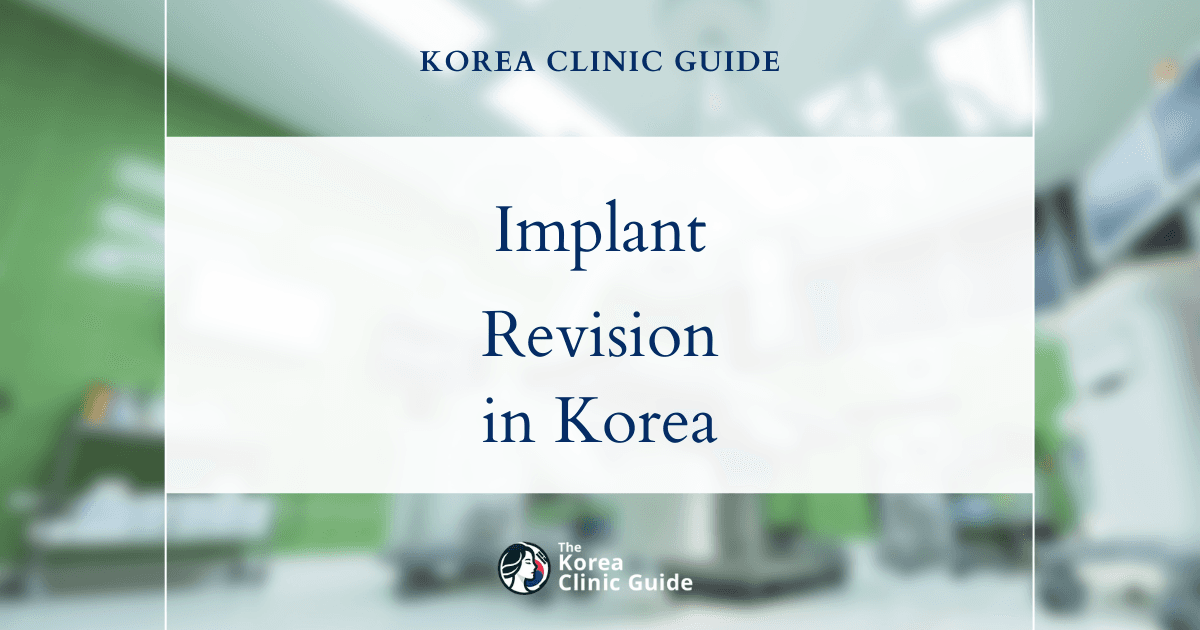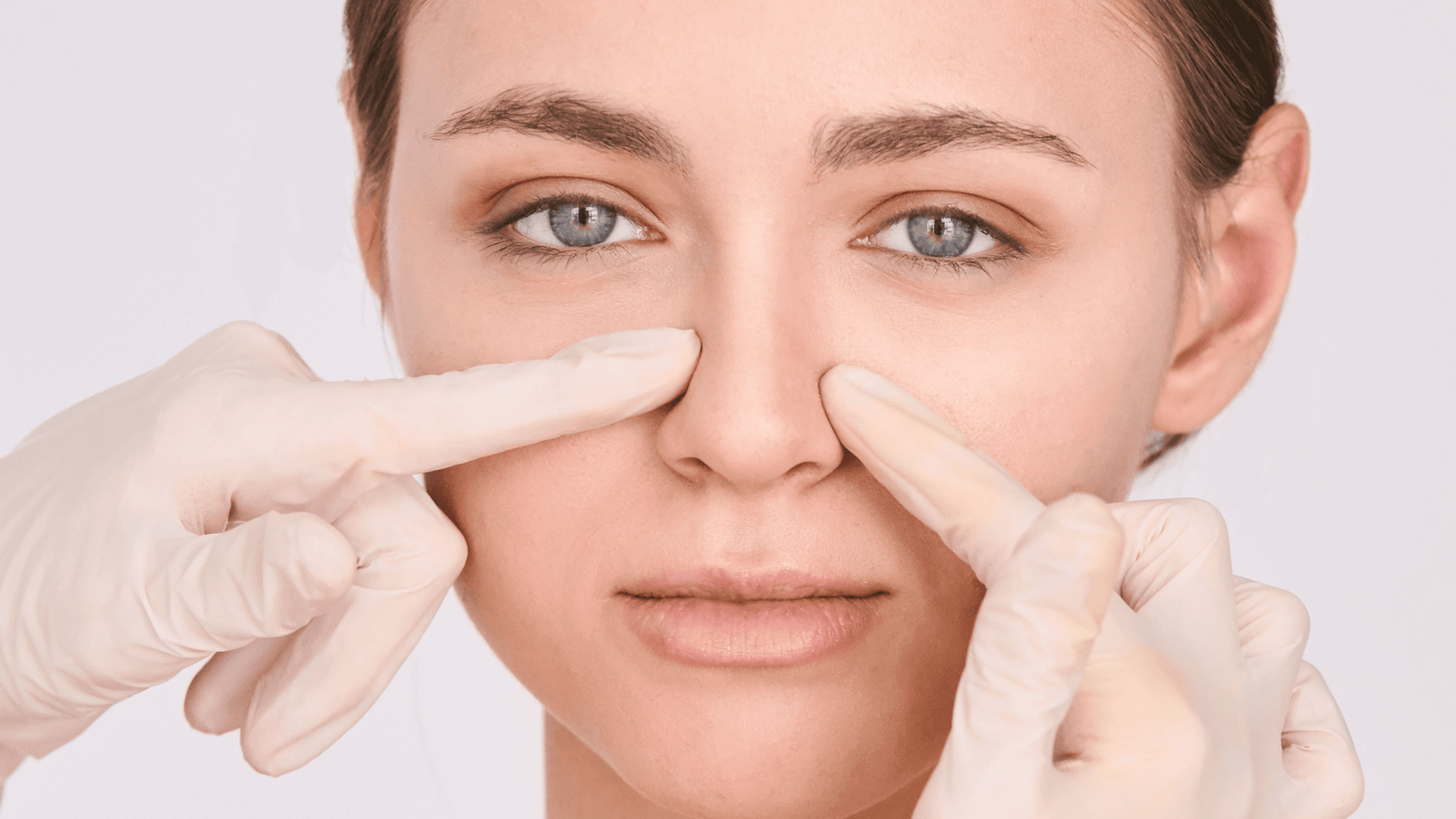Medical Tourism Blog
Rhinitis Surgery in Korea | Best Clinics, Costs, Procedure Types & More

Table of contents
- What Is Rhinitis Surgery?
- Best Clinics in Korea for Rhinitis Surgery
- Getting Rhinitis Surgery in Korea
- Cost of Rhinitis Surgery in Korea
- Alternatives to Rhinitis Surgery
- Conclusion
Are you tired of battling persistent nasal congestion despite trying every remedy in the book? Rhinitis surgery, a cutting-edge treatment gaining traction in Korea, might just be the revolutionary solution you're seeking. Discover the transformative world of rhinitis surgery, from understanding the procedure and identifying ideal candidates, to navigating Korea's top clinics and uncovering the true costs involved in this insightful guide.
What Is Rhinitis Surgery?
Rhinitis surgery is a medical procedure aimed at alleviating the symptoms of chronic rhinitis, a condition characterized by persistent inflammation of the nasal mucous membranes. Chronic rhinitis can be caused by allergies, infections, or other underlying conditions, leading to symptoms such as nasal congestion, runny nose, sneezing, and sinus pressure. When conservative treatments such as medications and lifestyle changes are insufficient in managing these symptoms, rhinitis surgery may be considered as a viable option.
The primary goal of rhinitis surgery is to improve nasal airflow and reduce nasal obstruction. This is achieved by addressing the structural and functional issues within the nasal passages. Several types of rhinitis surgeries can be performed, depending on the specific needs of the patient:
-
Turbinate Reduction Surgery: One of the most common procedures, this surgery involves reducing the size of the turbinates—bony and soft tissue structures inside the nose that help to warm and humidify the air we breathe. Enlarged turbinates can obstruct airflow, so reducing their size can alleviate nasal congestion. Various techniques can be used, including radiofrequency ablation, microdebrider-assisted turbinoplasty, and laser therapy.
-
Septoplasty: This surgical procedure corrects a deviated septum, which is a displacement of the bone and cartilage that divide the nasal cavity into two nostrils. A deviated septum can cause significant nasal obstruction and contribute to chronic rhinitis symptoms. During septoplasty, the surgeon straightens and repositions the septum to improve airflow.
-
Endoscopic Sinus Surgery: Chronic rhinitis can sometimes be accompanied by chronic sinusitis, where the sinus passages become inflamed and blocked. Endoscopic sinus surgery employs the use of a thin, flexible tube with a camera (endoscope) to visually guide the removal of blockages and polyps from the sinus cavities. This can enhance drainage and reduce inflammation.
-
Nasal Valve Repair: The nasal valve area is the narrowest part of the nasal airway and can sometimes contribute to nasal obstruction. Surgical techniques such as spreader grafts or lateral wall implants are employed to reinforce this area and improve airflow.
-
Cryotherapy: This minimally invasive procedure involves the application of extreme cold to targeted areas within the nasal passage to reduce nerve activity, subsequently decreasing nasal congestion and rhinorrhea (runny nose).
-
Balloon Sinuplasty: This procedure is a less invasive option compared to traditional sinus surgery. A small balloon is inserted into the nasal passage and inflated to widen the sinus openings, improving drainage and reducing inflammation.
Before undergoing rhinitis surgery, patients typically undergo a comprehensive evaluation including nasal endoscopy, imaging studies like a CT scan, and allergy testing. This thorough assessment helps to identify the exact causes of chronic rhinitis and determine the most appropriate surgical intervention.
Rhinitis surgery is generally performed under local or general anesthesia, and the duration of the procedure can vary depending on its complexity. Post-operative care involves managing swelling, pain, and any potential complications. Patients are usually advised to follow specific guidelines regarding nasal hygiene and activity levels to ensure a smooth recovery.
While rhinitis surgery can offer significant relief from chronic nasal symptoms, it may not be a cure-all solution. Long-term management, including allergy control and environmental modifications, may still be necessary to maintain optimal nasal function.
Who is Rhinitis Surgery for?
- Individuals with Nonallergic Rhinitis Complications: If growths in the nose called polyps are present and need removal, surgery can be beneficial.
- Patients with a Deviated Septum: Surgery can correct a problem where the thin wall between the nasal passages is off-center or crooked.
- People Unresponsive to Other Treatments: When medications such as antihistamines, decongestants, and steroids don’t alleviate symptoms, surgery might be an option.
- Chronic Symptoms: Those who experience constant symptoms that severely impact their quality of life, despite other treatments, may find relief through surgical intervention.
Best Clinics in Korea for Rhinitis Surgery
Listed below are the best clinics in Korea for rhinitis surgery:
| Clinic Name | Key Features | Special Techniques |
|---|---|---|
| THEPLUS Plastic Surgery | Korea’s premier clinic for rhinitis surgery and advanced rhinoplasty, led by globally recognized surgeons Dr. Jeong Jae-yong and Dr. Kim Taek-gyun; decades of experience; global surgical educators and academics; patient-centered philosophy; located in Garosu-gil, Gangnam | Academic leadership in rhinoplasty, “Rebuilding Nose: Rhinoplasty for Asians” medical textbook, global conference lectures, advanced primary and revision rhinoplasty techniques, focus on both functional and aesthetic outcomes |
| Made Young Plastic Surgery | Unwavering commitment to surgical excellence and patient safety; use of advanced materials; individualized planning with 3D-CT analysis; led by Dr. Lee Byeong-hoe (20+ years experience, expert in complex revisions); robust safety and aftercare system; multiple awards and certifications | Precision 3D-CT planning, advanced osteotomy, autologous rib grafts, dorsal hump correction, refined tip work, stringent anesthesiology and monitoring protocols, systematic aftercare |
| Okay Plastic Surgery Clinic | Holistic, patient-centered care; renowned female plastic surgeon; expertise in both aesthetic and functional rhinoplasty, including complex revisions; broad range of services (body contouring, breast, skincare, scar care); focus on safety, comfort, and individualized solutions | Advanced techniques for both aesthetic and functional nose procedures, comprehensive pre- and post-surgical care, individualized revision approaches, continuum of aesthetic and reconstructive care |
THEPLUS Plastic Surgery
THEPLUS Plastic Surgery stands out as Korea’s premier clinic for rhinitis surgery and advanced rhinoplasty, thanks to the unparalleled expertise and global recognition of its leading surgeons, Dr. Jeong Jae-yong and Dr. Kim Taek-gyun. Both doctors are celebrated pioneers in cosmetic and reconstructive nasal procedures, having not only shaped surgical standards in Korea, Japan, and China, but also educated countless surgeons worldwide through their academic work and leadership at international conferences. Dr. Jeong, renowned as the President of the Korean Society of Plastic Surgeons, authored the influential book "Rebuilding Nose: Rhinoplasty for Asians," which quickly became an authoritative educational resource in multiple languages, while Dr. Kim’s award-winning research and contributions to “The 18 Masters of Korean Aesthetic Surgery” highlight his mastery in both primary and revision rhinoplasty. Their regular participation in global forums, advisory roles at top hospitals across Asia, and ongoing educational sessions ensure THEPLUS remains at the forefront of surgical innovation. At the heart of the clinic’s ethos is a patient-centered philosophy, combining the highest standards of safety, artistic excellence, and functional outcomes. Situated in the vibrant Garosu-gil area of Gangnam, THEPLUS provides comprehensive, personalized care backed by decades of surgical experience, a robust academic foundation, and commitment to achieving both functional relief and aesthetic harmony for every rhinitis and rhinoplasty patient.
You can check out their website here: THEPLUS Plastic Surgery Website
Made Young Plastic Surgery
Made Young Plastic Surgery stands at the forefront of rhinitis surgery in Korea, revered for its unwavering commitment to surgical excellence, patient safety, and stunning aesthetic outcomes. The clinic employs the most advanced materials and techniques to craft a resilient internal nasal structure, eliminating concerns of tip drooping and sustaining a natural, attractive nose shape long-term. Surgical planning is informed by state-of-the-art 3D-CT precision analysis—meticulously assessing nasal bones, septum, and asymmetries to ensure individually tailored results. Under the expert guidance of Dr. Lee Byeong-hoe, who brings over 20 years of exclusive rhinoplasty and complex revision experience (including successful operations on patients requiring up to their eighth revision), Made Young excels in even the most challenging cases. Dr. Lee specializes in dorsal hump correction and refined tip work, utilizing advanced osteotomy and autologous rib grafts to create ideal nasal contours that honor each patient’s unique facial proportions. Every surgery is supported by a comprehensive safety system, including board-certified anesthesiologists, real-time 1:1 monitoring, cross-check protocols, and full transparency through CCTV monitoring. Following the procedure, patients benefit from systematic, personalized aftercare in a dedicated center. Recognized with multiple prestigious awards and official certifications, Made Young Plastic Surgery exemplifies the pinnacle of quality, safety, and artistry in rhinitis surgery, making it the premier destination for patients seeking both meaningful functional improvement and aesthetically exquisite results in Korea.
You can check out their website here: Made Young Plastic Surgery Website
Okay Plastic Surgery Clinic
Okay Plastic Surgery Clinic stands out as the premier destination for rhinitis surgery in Korea, thanks to its holistic, patient-centered approach rooted in sincerity, precision, and individualized care. Led by an accomplished team that includes a renowned female plastic surgeon with extensive experience, the clinic combines advanced expertise in both aesthetic and functional nose procedures—including difficult rhinoplasty and revision cases—with a commitment to personalized solutions that respect each patient's unique needs and aspirations. Beyond rhinitis surgery, Okay Plastic Surgery Clinic offers a comprehensive suite of specialized services, from body contouring and breast procedures to advanced skincare and scar management, ensuring a continuum of care that supports patients through every stage of their transformation. With state-of-the-art techniques, a focus on patient safety and comfort, and an exceptional standard of professional empathy, Okay Plastic Surgery Clinic delivers transformative results, making it the trusted choice for those seeking the best outcomes in rhinitis surgery and beyond in Korea.
You can check out their website here: Okay Plastic Surgery Clinic Website
Getting Rhinitis Surgery in Korea

Rhinitis, often known as nasal inflammation, affects countless people worldwide, causing symptoms such as runny nose, sneezing, and congestion. When medications and other non-invasive treatments fail to provide relief, surgery may become a necessary option. Korea is renowned for its advanced medical technology and highly skilled surgeons, making it an attractive destination for those needing rhinitis surgery.
Types of Rhinitis Surgery
Several surgical procedures can be performed to address chronic rhinitis, each targeting different aspects of nasal anatomy and physiology. The most common types include:
- Septoplasty: This procedure corrects deviated septums, enhancing airflow through the nasal passages.
- Turbinoplasty: Turbinates are structures within the nose that can become swollen due to chronic inflammation. Turbinoplasty reduces their size and alleviates congestion.
- Endoscopic Sinus Surgery: Using an endoscope, surgeons can remove blockages and polyps from the sinus cavities, improving drainage and reducing inflammation.
Preoperative Evaluation
Prior to the surgery, a thorough preoperative evaluation is conducted. This usually includes:
- Medical History Review: A comprehensive look at the patient's past and present medical conditions, previous surgeries, and medication usage.
- Physical Examination: A detailed nasal examination, often involving endoscopy, to assess the internal structures and identify specific issues.
- Imaging Studies: CT scans or MRIs may be used to provide a detailed view of the nasal cavities and sinuses.
The Surgical Procedure
- Anesthesia: The patient typically undergoes general anesthesia, though local anesthesia with sedation is sometimes used.
- Incisions: Small incisions are made inside the nostrils to access underlying structures, minimizing external scarring.
- Surgical Correction: Depending on the type of surgery, the surgeon will correct deviated septums, reduce the size of swollen turbinates, or clear sinus blockages.
- Closure: The incisions are closed, and in some cases, nasal packing or splints are inserted to support the newly aligned structures during the healing process.
Postoperative Care
Recovery from rhinitis surgery in Korea involves several stages:
- Immediate Postoperative Care: This includes monitoring in a recovery room until the effects of anesthesia diminish. Patients may experience some swelling, bleeding, and discomfort, which is managed with pain medications.
- Follow-Up Appointments: Scheduled follow-ups are crucial to ensure proper healing. Surgeons will check for infection, monitor the progress, and remove any nasal packing or splints if used.
- Home Care Instructions: Patients are usually advised on nasal irrigation techniques, avoiding strenuous activities, and managing symptoms with prescribed medications.
Success Rates and Risks
Rhinitis surgery in Korea boasts high success rates due to its well-established medical practices, advanced technology, and experienced surgeons. However, as with any surgical procedure, there are risks. These can include:
- Infection: Though rare, infections can occur and may require antibiotic treatment.
- Bleeding: Some post-operative bleeding is normal, but excessive bleeding is a potential complication that needs medical attention.
- Scarring: Internal scarring could potentially lead to nasal blockages again, necessitating further intervention.
Choosing a Clinic and Surgeon
When selecting a clinic for rhinitis surgery in Korea, it is important to consider the following:
- Reputation and Reviews: Research patient reviews and testimonials regarding the clinic and specific surgeons.
- Qualifications and Experience: Ensure the surgeon is board-certified and has extensive experience in performing rhinitis surgeries.
- Consultation: Schedule consultations to discuss the procedural details, understand the risks, benefits, and what to expect during recovery.
By carefully considering these factors and understanding the detailed process, individuals can make informed decisions about undergoing rhinitis surgery in Korea. With its state-of-the-art facilities and expert medical professionals, patients can expect high-quality care and positive outcomes.
Cost of Rhinitis Surgery in Korea
When considering Rhinitis Surgery, cost is often a significant factor that influences patients' decisions on where to undergo treatment. South Korea has emerged as a popular destination for medical procedures, including Rhinitis Surgery, due to its advanced healthcare infrastructure and competitive pricing.
In South Korea, the cost of Rhinitis Surgery generally ranges from $2,000 to $5,000. This range can vary depending on the hospital, the surgeon's expertise, and the specifics of the procedure required. Many hospitals offer package deals that also include pre-operative consultations, post-operative care, and even accommodation for international patients.
Comparatively, in the United States, the cost of Rhinitis Surgery is significantly higher, typically ranging from $6,000 to $15,000. This price variation depends on factors such as the complexity of the surgery, the geographical location of the medical facility, and the surgeon’s reputation. Additionally, healthcare costs in the U.S. can be inflated by administrative fees, which are generally lower in South Korea.
In other countries, the costs also vary widely. For example, in the United Kingdom, the price for Rhinitis Surgery ranges from £4,000 to £10,000 ($5,200 to $13,000). In Australia, the procedure can cost between AUD 6,000 to AUD 12,000 ($4,300 to $8,700 USD). Meanwhile, in countries like India, the surgery can be much more affordable, with costs ranging from $1,000 to $2,500.
Overall, South Korea offers a compelling balance of high-quality medical care and relatively low costs, making it an attractive option for patients from around the world seeking Rhinitis Surgery.
Alternatives to Rhinitis Surgery
1. Antihistamine Nasal Sprays
Antihistamine nasal sprays serve as a frontline defense in managing rhinitis symptoms by blocking histamines—substances in the body that cause allergic reactions. Commonly prescribed antihistamine nasal sprays include azelastine (Astepro) and olopatadine hydrochloride (Patanase). Unlike oral antihistamines such as diphenhydramine (Benadryl) or loratadine (Claritin), nasal sprays directly target the nasal passages, providing localized relief from symptoms such as a runny nose and sneezing. They are especially beneficial for nonallergic rhinitis, where traditional oral antihistamines may be less effective.
2. Nasal Saline Irrigation
Nasal saline irrigation is a non-pharmacological treatment that involves flushing the nasal cavity with a saline (saltwater) solution. This technique helps to cleanse the nasal passages, removing irritants and reducing congestion. Using a bulb syringe, neti pot, or saline squeeze bottle, the saline solution is introduced into one nostril and allowed to flow out of the other, carrying with it mucus and allergens. For best results, it's recommended to perform nasal saline irrigation daily. The solution should be made with distilled, sterile, boiled and cooled, or properly filtered water to prevent infections.
3. Decongestants
Decongestants like pseudoephedrine (Sudafed) and phenylephrine are highly effective at narrowing the blood vessels in the nasal passages, thereby reducing swelling and congestion. Available over-the-counter or by prescription, these medications provide quick relief but come with side effects such as increased blood pressure, heart palpitations, and insomnia. They are especially useful for short-term relief during episodes of severe congestion. However, prolonged use, especially of topical nasal decongestants, can lead to rebound congestion, making it crucial to follow medical instructions on usage duration and dosage.
Conclusion
In conclusion, rhinitis surgery in Korea offers a promising solution for those suffering from chronic nasal issues, combining advanced medical technology with skilled surgical expertise. The country's healthcare facilities are renowned for their high standards and patient-centric care, making it an attractive destination for both local and international patients. With a variety of surgical options tailored to the specific needs of each patient, coupled with thorough pre- and post-operative care, Korea stands out as a leading hub for effective rhinitis treatment. Whether driven by the pursuit of better health or improved quality of life, patients undergoing rhinitis surgery in Korea can expect favorable outcomes and a significant reduction in symptoms.















